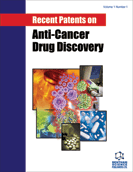
Abstract
Many anticancer drugs that are currently used in cancer treatment are natural products or their analogues by structural modification. Caffeic acid (3, 4-dihydroxycinnamic acid; CA) is classified as hydroxycinnamic acid and has a variety of potential pharmacological effects, including antioxidant, immunomodulatory and anti-inflammatory activities. As a drug carrier, solid lipid nanoparticles (SLNs) introduced to improve stability, provide controlled drug release, avoid organic solvents and are obtained in small sizes. In this study, we developed solid lipid nanoparticles incorporating with caffeic acid using hot homogenization method. Caffeic acid loaded solid lipid nanoparticles were characterized regarding particle size, zeta potential, drug entrapment efficiency, drug release, scanning electron microscopy (SEM) and FT-IR. The effects of caffeic acid loaded solid lipid nanoparticles on MCF-7 cells were determined by 3-(4, 5-dimethylthiazol-2-yl)-2, 5-dimethyl tetrazolium bromide (MTT) test and Annexin V-PI analysis. As a result, solid lipid nanoparticles could potentially be used for the delivery of caffeic acid and solid lipid nanoparticles formulation enhanced the effects of caffeic acid on MCF-7 cells. Some relevant patents are also referred in this article.
Keywords: Apoptosis, caffeic acid (CA), cancer, characterization, drug delivery systems, solid lipid nanoparticles (SLNs).
Recent Patents on Anti-Cancer Drug Discovery
Title:Characterization of Solid Lipid Nanoparticles Containing Caffeic Acid and Determination of its Effects on MCF-7 Cells
Volume: 10 Issue: 2
Author(s): Gokhan Dikmen, Gamze Guney and Lutfi Genc
Affiliation:
Keywords: Apoptosis, caffeic acid (CA), cancer, characterization, drug delivery systems, solid lipid nanoparticles (SLNs).
Abstract: Many anticancer drugs that are currently used in cancer treatment are natural products or their analogues by structural modification. Caffeic acid (3, 4-dihydroxycinnamic acid; CA) is classified as hydroxycinnamic acid and has a variety of potential pharmacological effects, including antioxidant, immunomodulatory and anti-inflammatory activities. As a drug carrier, solid lipid nanoparticles (SLNs) introduced to improve stability, provide controlled drug release, avoid organic solvents and are obtained in small sizes. In this study, we developed solid lipid nanoparticles incorporating with caffeic acid using hot homogenization method. Caffeic acid loaded solid lipid nanoparticles were characterized regarding particle size, zeta potential, drug entrapment efficiency, drug release, scanning electron microscopy (SEM) and FT-IR. The effects of caffeic acid loaded solid lipid nanoparticles on MCF-7 cells were determined by 3-(4, 5-dimethylthiazol-2-yl)-2, 5-dimethyl tetrazolium bromide (MTT) test and Annexin V-PI analysis. As a result, solid lipid nanoparticles could potentially be used for the delivery of caffeic acid and solid lipid nanoparticles formulation enhanced the effects of caffeic acid on MCF-7 cells. Some relevant patents are also referred in this article.
Export Options
About this article
Cite this article as:
Dikmen Gokhan, Guney Gamze and Genc Lutfi, Characterization of Solid Lipid Nanoparticles Containing Caffeic Acid and Determination of its Effects on MCF-7 Cells, Recent Patents on Anti-Cancer Drug Discovery 2015; 10 (2) . https://dx.doi.org/10.2174/1574892810666150115124413
| DOI https://dx.doi.org/10.2174/1574892810666150115124413 |
Print ISSN 1574-8928 |
| Publisher Name Bentham Science Publisher |
Online ISSN 2212-3970 |
 39
39 2
2
- Author Guidelines
- Graphical Abstracts
- Fabricating and Stating False Information
- Research Misconduct
- Post Publication Discussions and Corrections
- Publishing Ethics and Rectitude
- Increase Visibility of Your Article
- Archiving Policies
- Peer Review Workflow
- Order Your Article Before Print
- Promote Your Article
- Manuscript Transfer Facility
- Editorial Policies
- Allegations from Whistleblowers
Related Articles
-
miR-488-3p Represses Malignant Behaviors and Facilitates Autophagy of
Osteosarcoma Cells by Targeting Neurensin-2
Current Pharmaceutical Biotechnology Morpho-Functional Features of In-Vitro Cell Death Induced by Physical Agents
Current Pharmaceutical Design Castration Resistant Prostate Cancer: From Emerging Molecular Pathways to Targeted Therapeutic Approaches
Clinical Cancer Drugs Anti-Cancer Approach with NK4: Bivalent Action and Mechanisms
Anti-Cancer Agents in Medicinal Chemistry Phytocannabinoids for Cancer Therapeutics: Recent Updates and Future Prospects
Current Medicinal Chemistry Potential Non-coding RNAs from Microorganisms and their Therapeutic Use in the Treatment of Different Human Cancers
Current Gene Therapy Target Cells for HIV-1/SIV Infection in Mucosal Tissue
Current Immunology Reviews (Discontinued) Disorders of Sex Development: A Review
Current Women`s Health Reviews Protein kinases and the Hypoxia-Inducible Factor-1, two switches in angiogenesis
Current Pharmaceutical Design Cancer Invasion and Metastasis: Discovering New Targets For Diagnosis and Therapeutics
Current Signal Transduction Therapy Improving Brain Drug Targeting Through Exploitation of The Nose-to- Brain Route: A Physiological and Pharmacokinetic Perspective
Current Drug Delivery Inhibiting the Enzymes of the Endothelin and Renin-Angiotensin Systems in Cancer
Current Enzyme Inhibition Traditional Chinese Medicine - Sea Urchin
Mini-Reviews in Medicinal Chemistry Dual EGFR and COX-2 Inhibition as a Novel Approach to Targeting Head and Neck Squamous Cell Carcinoma
Current Cancer Drug Targets Cytostatic and Apoptotic Effects of DNMT and HDAC Inhibitors in Endometrial Cancer Cells
Current Pharmaceutical Design Tumor Specific Imaging Using Tc-99m and Ga-68 Labeled Radiopharmaceuticals
Current Medical Imaging A Triphenyltin(IV) Nicotinate Derivative – Synthesis and Toxicity Towards Different Tumour and Normal Cell Lines
Letters in Drug Design & Discovery A Review on the Expression and Metabolic Features of Orphan Human Cytochrome P450 2S1 (CYP2S1)
Current Drug Metabolism LPA and its Analogs-Attractive Tools for Elucidation of LPA Biology and Drug Development
Current Medicinal Chemistry Polymer Membrane and Cell Models for Drug Discovery
Combinatorial Chemistry & High Throughput Screening


























